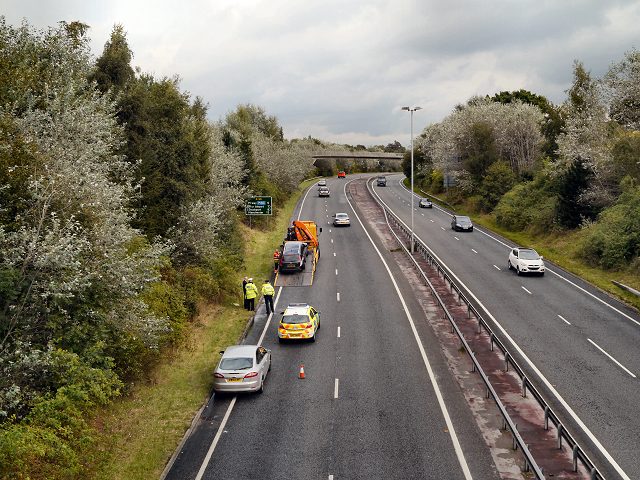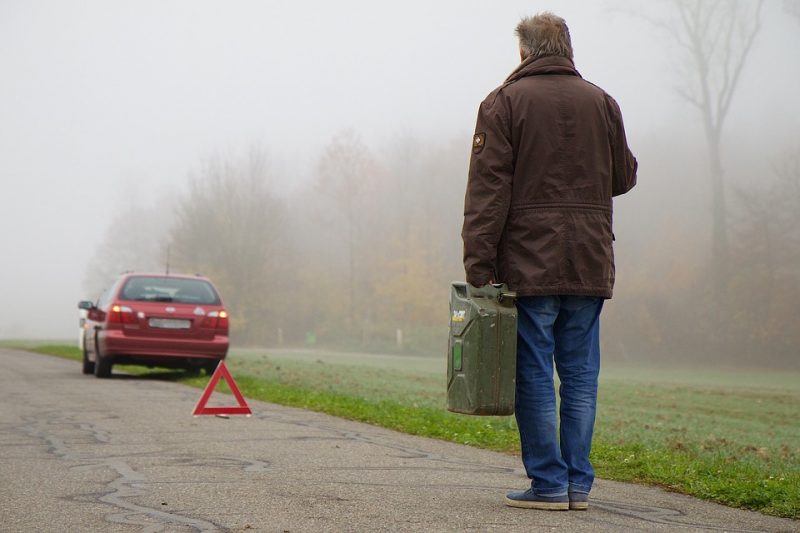Summary
Step 1: Recognize the symptoms of fuel exhaustion
Step 2: Adopt safety reflexes in the event of running out of gas
Step 3: Take Steps to Help Your Vehicle
The best way to avoid running out of gas is to always drive with sufficient gas in your tank. However, if a breakdown does occur, there are certain reflexes to adopt and measures to take.
Don’t panic! Here’s what to do if you run out of gas.
1. Recognize the symptoms of fuel starvation
You don’t need to be an automotive expert to recognize some of the warning signs of a gas shortage.
First, the fuel gauge and the fuel warning light should tell you how much fuel you are left: if you didn’t fill up when the needle on the indicator was at its lowest point, especially from the fuel warning light, expect the worst. As a general rule, from the lighting of the indicator light or the instrument cluster’s warning message, you can drive between 70 and 100 km before the breakdown. An example not to follow is some people who often run out of gas are usually accustomed to going with the warning light and always pushing the limits.
In a second phase, just before the petrol breakdown, the first engine jerks appear. You have at best 1 to 3 km left before the final stop.
The irremediable happens: the operating hiccups increase until the engine is completely extinguished.
2. Adopt safety reflexes in case of fuel starvation
Running out of gas is an abnormal situation that can affect your passengers’ safety and that of other road users.
It would help if you, therefore, adopt the following basic safety rules very early on:
– As soon as the first symptoms appear, while the vehicle is still moving, signal yourself by switching on the hazard warning lights. On a multi-lane road, pull over to the right side of the road.
– Before the engine shuts off, park at the side of the road to prevent any accident.
– Then, get the occupants out of the vehicle and away from the road or behind guardrails on the highway. Put on the safety vest to alert other motorists.
– Mark your disabled vehicle by visibly positioning the warning triangle at least 30 m (100 feet) away or more in the event of a cornering stop.
3. Rules to follow on highway or expressway

No person shall walk on any highway lanes, including the hard shoulder, except to access the nearest call station. Even if you can call from your cell phone, the call station allows you to locate your position precisely and directly access the highway company’s road services.
Calling for help is, therefore, the only acceptable solution. Since hitchhiking may not be allowed on highways, it is an approved convenience store that will get you out of trouble, most of the time by taking your vehicle to the nearest garage.
On the road
At the first sign of trouble and to get closer to a station, drive on economy mode, turn off the engine on downhill slopes (with the hazard lights on), and turn the steering wheel from side to side (without endangering yourself) to allow the last drops of fuel to be sucked up. This action can increase the range by up to 1 km. But this applies only to expert drivers. Don’t risk your life, please.
Once you have stopped the vehicle off the road and applied the safety measures, there are three troubleshooting options to consider:
– calling a tow truck: the average cost is $90 to $150;
– ask other road users to drop you off at a service station;
– walk to the nearest service station.
Now, you know what to do if you are stranded without gas. Please remember to share this post and leave your comments below.

